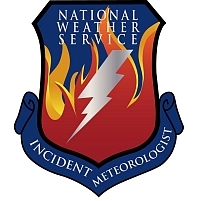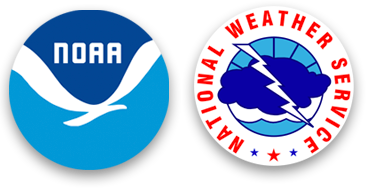The Unsung Heroes of Firefighting: NWS Forecasters in the Field - National Weather Service Heritage

The Unsung Heroes of Firefighting: NWS Forecasters in the Field
By Emily Senesac (emily.senesac@noaa.gov)When most people think of National Weather Service forecasts, they imagine destructive cyclones, devastating tornadoes, and dangerous thunderstorms. However, many don’t realize the NWS also provides warnings and forecasts for another hazard: wildfires.
Until 1910, there was no real concentrated national effort to handle fires. That very year, however, catastrophic fires raged across Idaho, Montana, and Washington, drastically impacting how the country dealt with this type of hazard. In response to this tragedy, the US Forest Service was tasked with fighting forest fires -- but they couldn’t do it alone. Realizing weather phenomena play a big role in the behavior of a spreading fire, the Forest Service decided to involve the U.S. Weather Bureau, the predecessor to the National Weather Service.
Four years after those disastrous wildfires swept through the northwest, the Weather Bureau began doing forecasts specifically for the fire weather community. Two years later, in 1916, the first “mobile” weather unit was deployed, consisting of a forecaster and a team of horses to carry the equipment. These mobile units were dispatched to wildfire sites, ready and equipped to aid firefighters as they battled the blaze. The horses were the standard of use until 1930, when vans replaced the equine mode of transportation for forecasters that are now known as Incident Meteorologists, or IMETs.
Working alongside firefighters, NWS IMETs collect meteorological data that helps firefighters develop operational strategies for fighting and controlling fires. IMETs are NWS meteorologists who have completed specialized training primarily focused on responding to and forecasting for a wildfire. Trainees for the IMET program are required to understand how a fire reacts to certain weather, fuel, and topographic conditions, and must prove they can perform all duties needed for the post. This “proof” involves dispatches to real-life wildfire sites, and performance under a trained IMET. With today’s technology, an IMET can set up a fully-functional “mini” forecasting office at any site nationwide. However, that capability only came about in the last decade or so.
In 1965, the Forest Service and the Bureau of Land Management developed the Boise Interagency Fire Center (BIFC) in order to better coordinate firefighting efforts across the Great Basin. The Weather Bureau joined this effort, creating a “Staff Meteorologist” position to streamline the IMET program and help first responders with decision-making. Later, the BIFC was renamed the National Interagency Fire Center to reflect the national scope of the organization’s mission.
As technology advanced, the Weather Service identified better ways to run the IMET program. Although the use of vans was highly successful in the early days of the program, the number of available vehicles for equipment transport was not enough to support the growing network of IMETs nationwide. Fortunately, improving technology allowed for the size of equipment to be scaled down significantly. Thus, the Air Transportable Meteorological Unit (ATMU) was born -- containing communications and observational equipment necessary to support a meteorologist preparing on-site forecasts at a wildfire or other incident. Even so, the ATMUs were still extremely expensive and difficult to transport until the 1990s, when the widespread use of laptops in the field brought equipment to an even more manageable size. Today, IMETs can travel anywhere a vehicle or helicopter can take them.
Currently, the main incidents IMETs cover are wildfires, but they occasionally respond to oil or chemical spills, as well as terrorism response drills. New technology like laptops, satellite equipment, and radar allow IMETs to view weather data in real time, leaps and bounds from the capabilities of the early 20th century. In the years to come, IMETs will continue to provide detailed forecasts and warnings to responders, in order to help devise a strategy to protect homes, properties, and most importantly, lives.
Additional Reading:
- Learn more about the National Interagency Fire Center at www.nifc.gov
